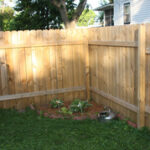Many years ago, I helped dear friends of mine build a deck next to their mobile home. Also known as trailer houses, traditional decks won’t work because the ledger board cannot be attached to the metal frame. They have no concrete foundations to attach the board to, either.
The only answer was a freestanding deck. Since their soil was soft, we planned to use special footings and posts. It was a lot of work, but in the end the deck was spectacular. This works for houses whose construction won’t allow the attachment of ledger boards, RV’s and travel trailers used for primary residences, or anywhere you want a deck.
Step One:
The first stop was to the ordinance board for a building permit. My friends had to show plans they drew for their deck, estimate its cost and schedule for inspections. Since they had no plans that included gas lines or electrical lines, a simple building inspection was all that was needed.
The permit was issued, and a copy of local codes requiring footings beneath the surface was given to my friends.
Step Two:
We used wooden stakes and landscape string to mark out the size of the deck. We planned for posts every eight feet, which meant more footings. In harder soils, footings might not have been needed.
A footing is sort of like an anchor for the post. It flares out at the bottom and helps take the weight of the post and structure above it. The post alone would be driven into the soil, and the structure would sink.
If your area requires footings, find out which type you need before you begin.
Step Three:
After determining that 24 footings were needed, we calculated the sheer amount of concrete needed to pour and fill all the forms. My friends purchased the concrete as their finances allowed, and for a few weekends, we all mixed and poured concrete.
At the top of each footing, we installed brackets for the posts. This was the easy part. The inspector passed the footings, and we were on our way. He did note that we probably had twice as many footings as we needed, but we told him this deck wasn’t moving.
Step Four:
We attached eight 1-by-4’s around the deck’s perimeter and ran two landscape strings. The first marked the floor of the deck, and the second would be the top of the railing. String levels insured the deck and railings would be level.
The attachments for the stairs were clearly marked.
All this time, my friends and I used the back door and staircase.
Step Five:
We attached the joists (these are the boards the deck floor will attach to) to the posts, making certain we were level before using lag bolts and washers. Listening to “up a half-inch, lower a little bit” all day was annoying, but in the end worth it all.
Before going any further, the joists were reinforced with angle brackets and bracing. An outer joist was attached all the way around with the corners mitered for looks. Metal joist hangers are available at DIY stores- these make construction easier, and save on trying to cross-nail everything.
Step Six:
The stairs were built using a framing square. Once the treads and risers were marked and cut out, they were attached to the deck front with joist hangers and the bottoms were set on a post-and-beam support. Yup, footings were underneath these, too. We wanted no wobble on these stairs.
The treads and riser boards attached quickly with decking screws.
Step Seven:
We had barely begun to measure and begin cutting for floor boards that day when a “discussion” broke out. Somebody suggested a herringbone pattern (something the deck wasn’t designed for), someone else suggested a brick-like pattern, while someone else suggested we put a tiled deck in place (huh?).
Those of us at the boards, including my friend, the owner’s wife, sat down and took a break while the discussion filled the air.
After all was finished, we measured for each board, placed 10d nails as spacers, and began attaching each decking board to the joists. A simple look took care of any future “ideas” or “changes” to the original design.
Once the floor was in place, we took a break. We did allow a three-week discussion to take place about the design of the railing, balusters and covering for the bottom of the deck space.
Step Eight:
With the plans for the balusters, railings and accessories in place, we attached the corner posts, railing tops, balusters and trim. The covering for the deck space above ground was easy- tight mesh hardware cloth covered by lattice. This helped keep out critters who would have loved a ready-made cave to set up housekeeping.
Step Nine:
It’s worth noting that sealing the wood took place at each step- the posts were covered with three coats of sealant before the joists were attached. The joists were then covered in sealant, and so on.
The deck boards were sanded before each was attached, and so was each railing, baluster, and so on. This saved work in the long run.
The entire deck received three coats of sealant before furniture was put in place. Trips to flea markets, garage sales, antique and junque stores and more were planned ahead for the right look.
Step Ten:
During the next few months, a ramp was installed at the side of the deck for a new friend’s wheelchair. It was easy, because the deck’s design was basic. Even though the electric chair was heavy, our footings allowed the extra weight with ease.
We bought the new “solar lights,” and installed them on the deck. They gave minimal light, but it was pretty in the country. We built a frame and hung canning jar lanterns, battery operated lights and eventually installed an outdoor outlet for a string of lights.
Over the course of time, a Shetland pony would be ridden onto the deck by a stubborn child- and the footings held. One of the full-sized horses and one of the donkeys untied themselves and were found on the deck, kicking the door because they wanted breakfast. The footings held. We made a gate for the ramp.
The deck held up beautifully and many friends over the years imitated it’s sturdy and basic design.
Sadly, an electrical fire took my friends’ trailer- and the deck with it. After clearing all the rubble, a new trailer was delivered. We didn’t speak much to each other- we grabbed shovels and uncovered our footings.
The local inspector said they were still good- we built a new deck. So far, no horses, ponies or donkeys have stepped hooves on it, but if they do- it’ll hold.
If you want to build a small deck for your house, check out this site- “How to Build a Small Deck,” at the “This Old House” website. Master Contractor Tom Silva explains building a small deck beginning with a ledger board. Keep in mind that without a ledger board, you’ll need to have joists and a perimeter joist all the way around your deck. You won’t need to remove any siding from your house, because it won’t be attached.
The best advice I can give is to stick to local building codes. They’re there for a reason. If you don’t need footings, so much the better. If you do- use them.
Source: The author of this article has over 40 years of experience in diverse forms of DIY, home improvement and repair, crafting, designing, and building furniture, outdoor projects and more.




